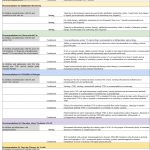For initial and subsequent treatment:
- NSAIDs are strongly recommended over no treatment in active sacroiliitis, and a TNF inhibitor is strongly recommended for patients with active sacroiliitis despite NSAIDs over NSAID monotherapy. A conditional recommendation is to use sulfasalazine in patients who cannot tolerate or don’t respond to a TNF inhibitor and a strong recommendation against methotrexate monotherapy.
- Conditional guidance is provided to use bridging therapy with a limited (less than three-month) course of oral glucocorticoids during initiation or escalation of therapy in children and adolescents with active disease despite NSAID treatment or intraarticular glucocorticoid injection into the sacroiliac joints as conditional adjunct therapy.
- A conditional recommendation is to use physical therapy in children with or at risk for functional limitations.
Enthesitis Recommendations
JIA patients with enthesitis have inflammation at tendon-to-bone insertion sites, defined as tenderness or swelling.
For initial and subsequent treatment:
- NSAID therapy is strongly recommended in children and adolescents with active enthesitis over no NSAID treatment, and a TNF inhibitor is strongly recommended for patients with active sacroiliitis despite NSAIDs over methotrexate or sulfasalazine. A limited course of oral glucocorticoids (fewer than three months) is conditionally recommended as bridging therapy during initiation or escalation of treatment, particularly in cases of high disease activity, limited mobility and/or significant symptoms.
- A conditional recommendation is made for physical therapy in patients at risk for functional limitations.
An Evolving Science
The JIA guideline addresses specific phenotypes of the disease, Dr. Ringold says, although “JIA is an umbrella term. Understanding of the underlying biology of JIA is evolving, and ideally, future recommendations will align with some of that biology more specifically.”
For now, she emphasizes, “Given the conditional nature of most of these recommendations, treatment decisions still require shared decision making between patients and providers.”
Kelly April Tyrrell writes about health, science and health policy. She lives in Madison, Wis.
References
- Ringold SR, Angeles-Han ST, Beukelman T, et al. 2019 American College of Rheumatology/Arthritis Foundation guideline for the treatment of juvenile idiopathic arthritis: Therapeutic approaches for non-systemic polyarthritis, sacroiliitis, and enthesitis. Arthritis Care Res.2019 Apr 25. doi: 10.1002/acr.23870. [Epub ahead of print]
- Ringold SR, Angeles-Han ST, Beukelman T, et al. 2019 American College of Rheumatology/Arthritis Foundation guideline for the treatment of juvenile idiopathic arthritis: Therapeutic approaches for non-systemic polyarthritis, sacroiliitis, and enthesitis. Arthritis Rheumatol. 2019 Apr 25. doi: 10.1002/art.40884. [Epub ahead of print]
- Angeles-Han ST, Ringold SR, Beukelman T, et al. 2019 American College of Rheumatology/Arthritis Foundation guideline for the screening, monitoring, and treatment of juvenile idiopathic arthritis-associated uveitis. Arthritis Care Res(Hoboken).2019 Apr 25. doi: 10.1002/acr.23871. [Epub ahead of print]
- Angeles-Han ST, Ringold SR, Beukelman T, et al. 2019 American College of Rheumatology/Arthritis Foundation guideline for the screening, monitoring, and treatment of juvenile idiopathic arthritis-associated uveitis. Arthritis Rheumatol. 2019 Apr 25. doi: 10.1002/art.40885. [Epub ahead of print]


